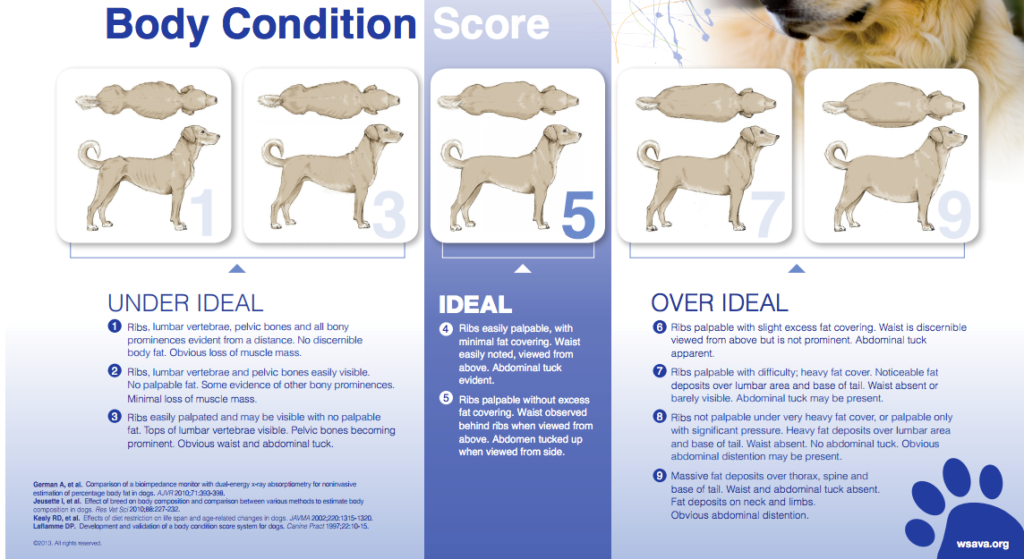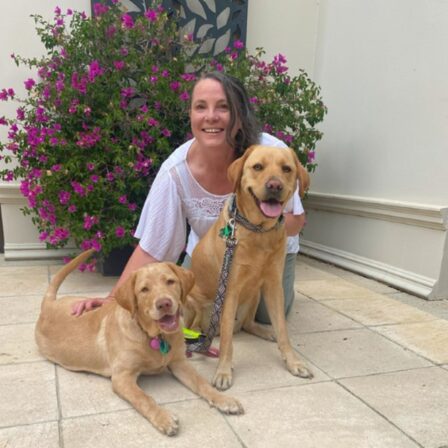News
Obesity in dogs – causes, consequences and prevention.
Obesity is the most common preventable disease in dogs and is one of our top concerns at Guide Dogs Victoria. Food is a great training tool and motivator, however, Labradors are particularly food-motivated and are therefore more susceptible to becoming obese.
Over-feeding is the most common cause of obesity in dogs.
The short and long-term consequences of obesity can be very serious for dogs and may affect them in severe ways such as:
- Reducing their overall life-span (by up to two years compared to their leaner counterparts)
- Increasing their chance of heart, joint and other metabolic diseases
- Increasing their risk during general anaesthesia
- Increasing their risk of heat stroke
Identifying a healthy body weight for your dog can sometime be difficult, as there can be a large variation between weights in healthy Labradors. In addition, images of dogs in the media are often consistently too heavy, which makes identifying “normal” even more difficult.
At Guide Dogs Victoria, we keep our dogs between 24 to 38kg. However this doesn’t mean that your dog is an ideal bodyweight simply because it’s between these values. Each dog is unique, so it’s best to chat with your vet who can help you identify a normal body condition and provide you with a target weight range specifically for your dog.
Assessing weight using the Body Condition Score.
Body condition is assessed by way of a nine-point scoring system, with one being severely underweight, and nine being severely obese. A healthy body condition score is four to five.

The scoring system is based on three measurements on your dog:
- Rib fat coverage
- Waist (top view)
- Abdominal tuck (side view)
A dog in an ideal body condition should have:
- Ribs easily palpable with minimal pressure, but never seen
- Notable waist when viewed from above
- Abdomen tucked up when viewed from the side
What should I do if I think my dog is under or over weight?
It’s always best to consult your vet. Some dogs may require different feeding regimes or exercise regimes. It’s not always easy to identify a normal body weight so we recommend speaking with a veterinary professional.
How we manage our dogs’ weights at Guide Dogs.
With our hungry pups never turning down a treat, we have a few tips for how we manage our dogs’ weights:
- Train our staff to use the Body Condition Score on all dogs whether they are in Puppy Raising or training. This helps us gauge the dog’s current condition.
- Regularly weigh our dogs – the scales don’t lie! This is the easiest way to make sure our adult dogs’ weights don’t slowly creep up.
- Adjust food amounts based on weigh-ins. Dogs are kept on a maintenance diet when they are at an ideal weight but we will increase or decrease food amounts based on their current weight results and anticipated activity levels.
- Measure (or better yet weigh!) their food allocation every day. This ensures our dogs are getting an accurate amount of food. It also makes adjustments easier if weight loss is required.
- A rigorous data and recording system is in place for each dog to track trends including body score, weight and current daily food allocation!
- Ensure adequate exercise in the form of walking, working or play to keep joints healthy and muscles strong. Exercise can be increased instead of (or as well as) reducing food amount if a weigh-in result is higher than optimum.
- Use the dog’s meal allocation for training rewards. We measure out the dogs’ evening meals at the start of the day, reward during training from this allocation and then feed whatever is left over at the end of the day. This prevents weight gain while still giving lots of rewards for their hard work
- Consult with our veterinarians about a dog’s ideal or target weight and discuss any weight loss plans with them to ensure the dog receives adequate nutrition for its energy needs even if it is on a weight reduction plan.








